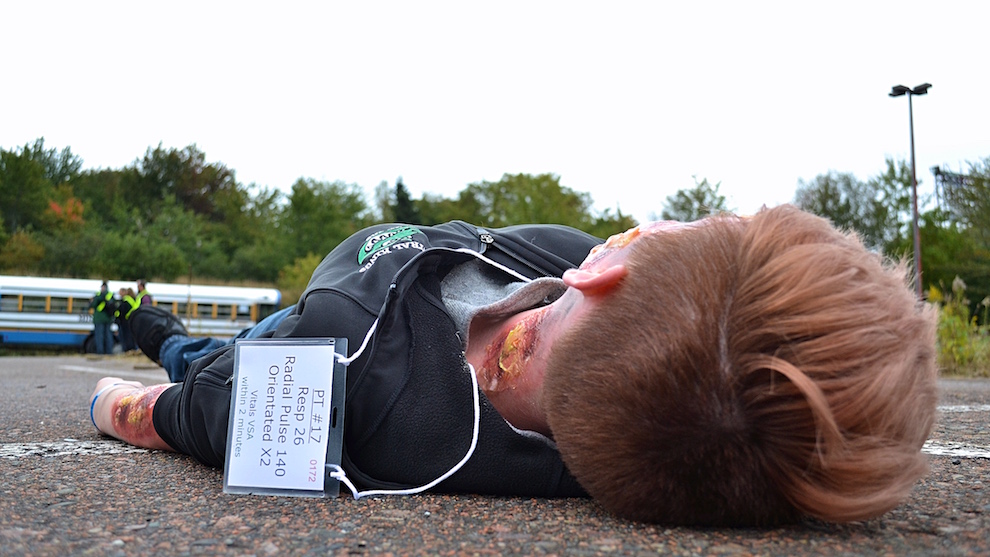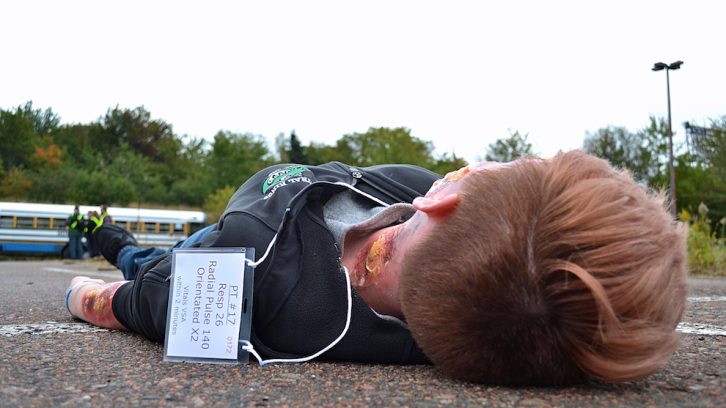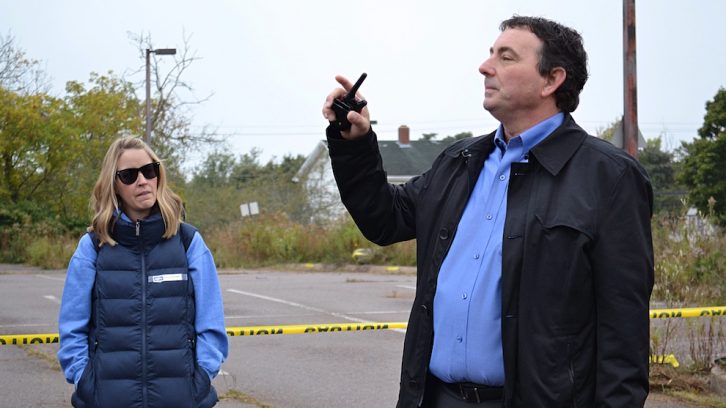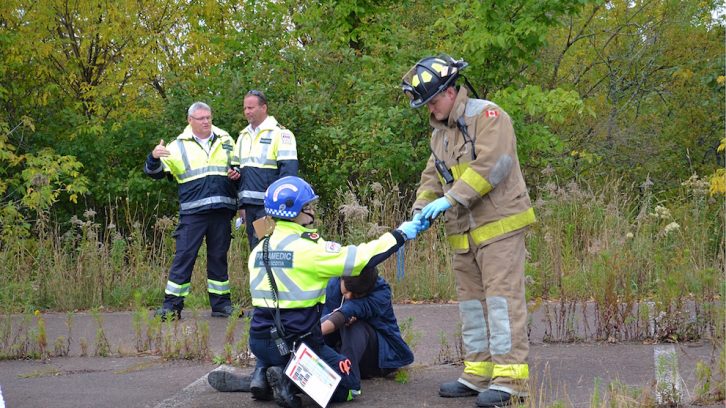Emergency Response
Mass casualty simulation tests health care system
Town of Truro, first responders, students combine for training exercise

caption
NSCC students play victims in casualty simulation.
caption
A Nova Scotia Community College student plays a victim in this week’s casualty simulation in Truro.More than 100 Nova Scotia Community College students were covered in fake blood and wounds and assigned roles to test Nova Scotia’s health and safety organizations on Wednesday.
A mass casualty situation – a train derailing – was simulated in Truro to test the teamwork of the agencies that would deal with such a disaster.
The simulation was put on by the Department of Health and Wellness, in cooperation with Emergency Health Services, Truro Police, the RCMP, the Canadian Armed Forces and the Truro Fire Department, as well as a HAZMAT team trained to handle hazardous materials and dangerous goods.
“This is not a situation where you just do the same thing that you do daily, just faster,” said Jim MacDougall, manager of planning, exercises and training for the Department of Health and Wellness.
“This requires a higher level of organization and coordination.”

caption
Jim MacDougall speaks with journalists during the simulation.The day began at 8:30 a.m., when students, all volunteers, gathered at the college’s Truro campus gym to have makeup done by members of the Canadian Armed Forces, who also volunteered for the event.
While the exercise was designed to test organization and team work within the higher levels of the departments and agencies, the biggest hands-on skill test was of the paramedics.
Others, while glad to help out, didn’t know what to expect.

caption
A paramedic passes a firefighter coloured bands for triage, determining the seriousness of an injury.“I’m a little bit out of my comfort zone,” said first-year law and security student Jason Peters, who saw the exercise as a way to give back to the community. Peters portrayed a passenger on the train, with serious wounds to his neck and face.
The students were given roles to go along with their injuries. Some were confused and asked where they were, or tried to wander off; some were only slightly wounded and tried to help their colleagues.
Some had to play dead.
Claudette McDonald teaches practical nursing at the Truro Campus. She said the exercise doesn’t just help the healthcare system — it helps students learn as well.
They’ll see the team work and the different roles that people have in health care situations like these, she said.
Three buses took the performance-ready students to the empty parking lot of the abandoned Colchester Regional Hospital. Some students remained on the buses, as if in the cars of the “train,” while others wandered around the parking lot.
Spectators, including MacDougall, military and police personnel, EHS and journalists, watched from a taped-off area in the middle of the parking lot. Andy Boutilier, a manager for the Department of Health and Wellness, explained the stages of response as the scenes unfolded.
The first to respond was the fire department. They made sure the area was safe and that no more incidents, such as explosions or fire, would occur.
The second group to respond were the paramedics. They did triage on the victims, putting coloured tags on students’ wrists based on the seriousness of their injury. Boutilier said in these types of incidents, it can often take a while for the patients to actually start being treated.
Next came the special hazards team to double-check that the area was safe, followed by more paramedics with equipment to deal with an incident with many casualties, such as a large blow-up tent for a make-shift hospital.
MacDougall said it’s about “how do you handle 100 casualties with resources as they start to trickle in,” as opposed to a hospital-type situation where resources are already at hand.
The department put on a similar exercise last year in Yarmouth and will host another one next year in Sydney.
[idealimageslider id=”13711″]
